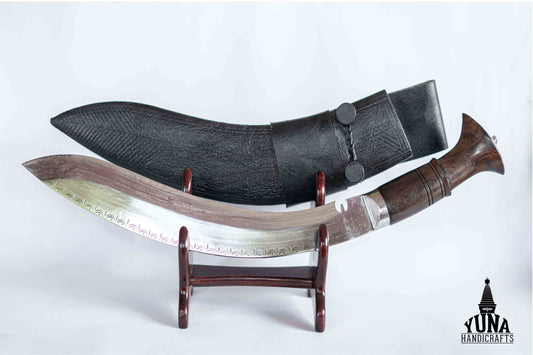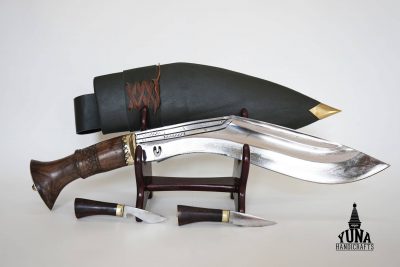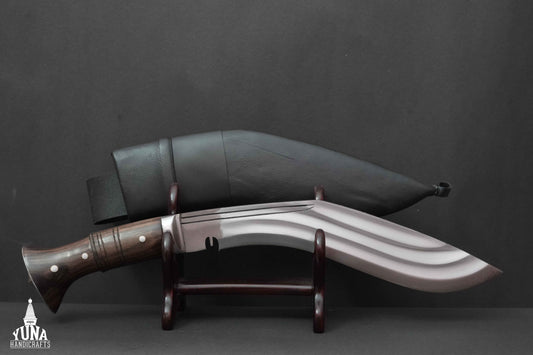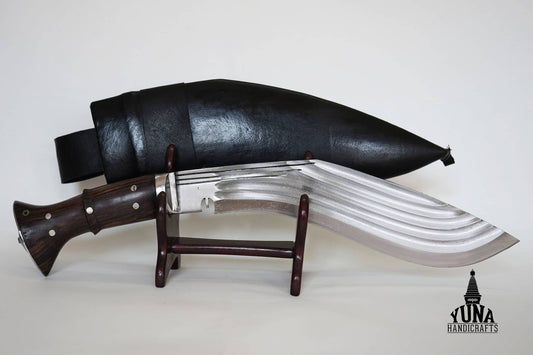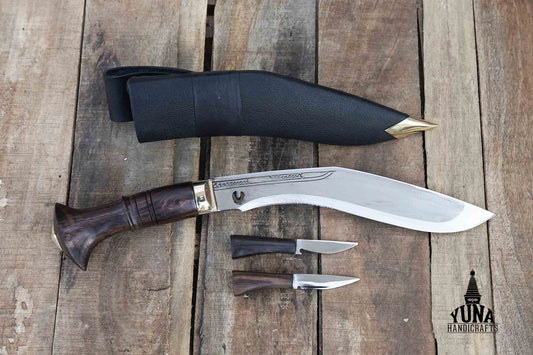
What are Kukris used for?
What are Kukris used for? Kukri is a multipurpose traditional Nepalese blade used by the brave Gurkhas. It is recognized by its distinct curve and thick blade, which is great for chopping. Historically, it was used during the wars and also for household chores. Let’s discuss the more uses of Kukris here.
Used by Armies as a Combat Knife
Kukri is a battle-tested weapon. This legendary weapon was used during the formation of the country of Nepal itself, and the Gurkhas serving in both world wars also used this weapon. The thick and heavy handle makes it ideal for chopping, and the powerful strike can break bones with a single strike. The bravery of the Gurkhas with the Kukri is the reason the British Army and the Indian Army have the Gurkha Brigade.
Clearing Bushes and Chopping Wood
In most rural areas of Nepal, people depend on farming and herding animals. They use a Kukri to clear bushes and cut branches for firewood and for animals. Kukri is made with thick steel and will last for generations, so people don’t have to worry much about the cost of replacing it.

A boy in rural Nepal with the Kukri
Slaughtering Animals for Food
Kukri is used all over Nepal for slaughtering animals like goats for food. Generally, a single powerful strike of this powerful blade can decapitate goats. Nepal is in many ways traditional, and the lack of a slaughterhouse means people rely on the Kukri to slaughter animals for food. It is also used to chop meat and bones.
Self-Defense Weapon
Kukri was made for self-defense and for battles. Almost every house in Nepal has this as a sign of good luck and also for self-defense reasons. It is also the most powerful weapon that normal people can own in Nepal. You can find these locally made blades in many popular locations, including Patan, Thamel, and more inside Kathmandu.
Used in Traditional Ceremonies in Nepal
Kukri is not just a blade or a weapon. It is rooted in the culture of Nepal people and it is used in many ceremonies, like weddings, the Bratabandha, and more.
Heritage Costumes of Many Nepalese People
Many local communities in Nepal wear the Kukri on their official dresses. It is like a part of their traditional costume.
Camping and Bushcraft
A kukri can be a very effective tool for your camping and bushcraft needs. This tool can do the work of an axe and a traditional knife. Whether you're clearing the bushes for camping, chopping the firewood, or chopping your hunt, a Kukri can be useful. Most Kukri also come with a small knife called Karda and a knife sharpener called Chakmak, as shown in the image below. A small knife can be used for skinning animals and more during camping or bushcraft.

Kukri as Heirloom
Being so interconnected in the life of Gurkhas, the Kukri is passed down from one generation to another in families. It is not a luxury; it is a daily driver for many Nepalese people.
Conclusion
The kukri is a multipurpose blade, and it serves more than just as a weapon for self-defense. It has multiple use cases and has been an essential part of the Nepalese people. If you are looking for traditionally handmade Kukris, we have an extensive range of products for you.

